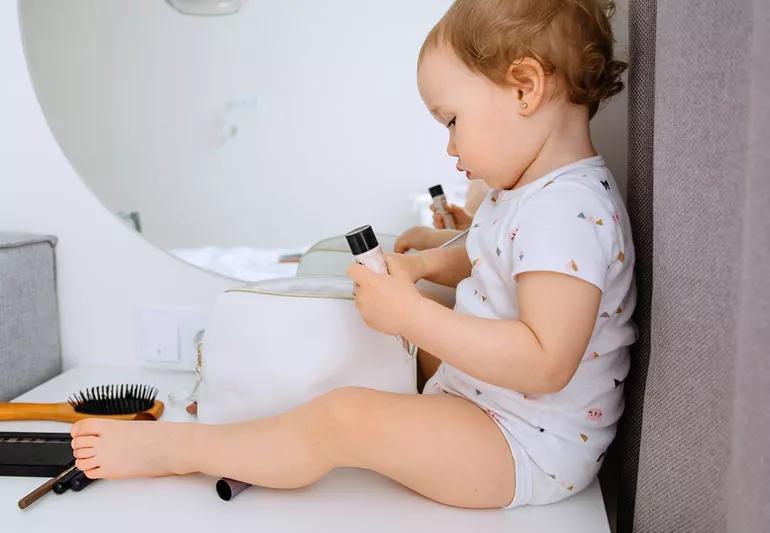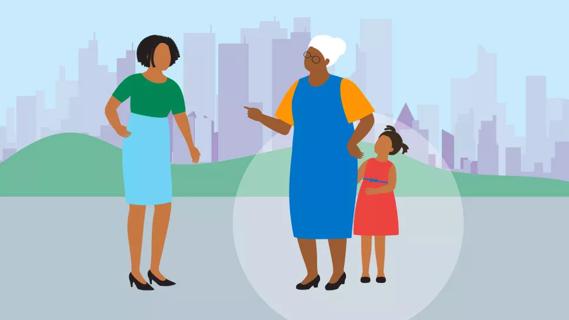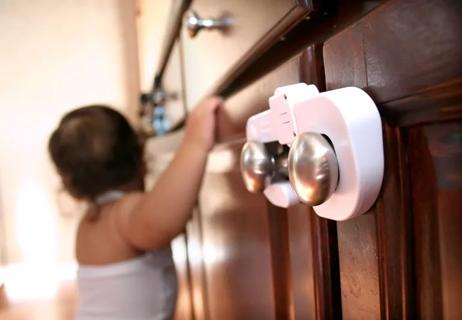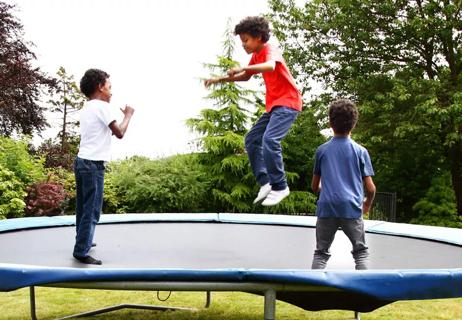Many cosmetic products can cause poisoning and chemical burns

Kids don’t just say the darndest things — they get into the darndest things, too. A tipped-over bottle, a mess on the counter, a telltale smear around their mouth (or all over your walls)…
Advertisement
Cleveland Clinic is a non-profit academic medical center. Advertising on our site helps support our mission. We do not endorse non-Cleveland Clinic products or services. Policy
Sometimes, the products they get into are harmless (to them, at least. We can’t speak to the bright red lipstick on your nice, white walls). But other times, kids get into cosmetics products that have the potential to cause real harm.
Emergency medicine physician Thomas Waters, MD, explains which products to keep locked up and away from curious kiddos.
You know to keep dangerous products like medications and cleaning products out of your kids’ reach. But are you clued into other dangers in plain sight around your bathroom?
“Products that can be safely used by adults can be harmful to kids who don’t know better,” Dr. Waters says. Cosmetic products, in particular, can be an accident waiting to happen.
Sure, you know nail polish remover isn’t drinkable, but inquisitive kids don’t yet have any existing knowledge of what’s safe and what’s going to hurt them.
A 2019 study found that more than 4,300 children under the age of 5 are treated for cosmetic-related injuries in emergency departments across the United States each year. The majority of these injuries occur in kids under age 2.
“Many of these products are packaged and designed to be visually appealing, and they often smell good,” Dr. Waters notes. “We have a sense of comfort with these products, but we should really keep them up out of the reach of little hands.”
Advertisement
Here are the most common culprits:
Nail polish itself is a risk, but nail polish remover is the cosmetics product at the root of most ingestion (swallowing) injuries. The chemicals in nail polish remover can irritate the throat and stomach and can even lead to acetone poisoning and other potentially severe concerns.
Hair relaxers, perm solutions and hair dye are the most likely to cause contact injuries, meaning kids can get rashes and chemical burns just by touching them. Kids who are exposed to these products are over three times more likely to be hospitalized than those who are exposed to other products.
Fragrances like perfumes, colognes and aftershaves are most likely to cause eye injuries — like, for example, when a child accidentally sprays themselves in the face with perfume.
Just because it smells good doesn’t mean it’s edible, but little kids don’t realize that. Creams and lotions account for about 10% of cosmetics-related injuries, which isn’t surprising when you think about how delicious they can smell and how colorful their packaging often is.
There are other products you should keep away from kids, too, at the risk of causing injury. They include:
Most cosmetics-related injuries are accidental poisonings or chemical burns on the skin or eyes. And your child doesn’t have to swallow very much to start experiencing symptoms.
“These items contain hydrocarbons, alcohol or other chemicals, and swallowing even small amounts can cause serious problems,” Dr. Waters states. Depending on what your child has gotten into, their symptoms may include:
Cosmetics products can also cause eye injuries, which can lead to:
The good news is that cosmetics-related injuries are usually treatable and not fatal. But if your child gets ahold of these products, it’s important to get medical help.
“The safest thing to do is to get to the emergency room,” Dr. Waters stresses. “If the child isn’t severely sick and you think their ingestion is mild, it’s reasonable to first call poison control at 1.800.222.1222. They might be able to help you decide whether the child needs to go to the ER.”
Here are a few additional tips, depending on what your child has swallowed or touched and what their symptoms are:
Advertisement
When you arrive in the ER or speak with poison control, be sure to have some important information at the ready:
You’ve seen how prone your toddler is to putting anything and everything in their mouth. So, even if you’ve never seen them reach things on the counter or open a bottle, don’t risk it.
“To keep kids safe, store cosmetic products in the same way you would medications,” Dr. Water recommends, “in locked cabinets out of their reach.”
Advertisement
Learn more about our editorial process.
Advertisement

It’s not just about people you don’t know — it’s about behaviors that don’t feel right.

Sexting has become all too common among kids, putting them at risk for bullying, blackmailing and human trafficking

It’s never too early to teach your kids who strangers are and how to avoid unsafe situations

Talk with your kids about online risks, and consider monitoring their activity

Install cabinet locks, outlet covers and safety gates to keep your child safe

Consider other outdoor activities

Adding extra formula, cereal or medications to your baby’s bottle is a dangerous and misguided practice

Teaching your baby to sign may help ease frustrations before they can talk, but it’s not a must-do

Babies can get congested easily, but you can calm their cough by keeping them hydrated, using nasal drops and running a humidifier

Weight loss may cause loose, sagging skin and muscle loss to your rear

Several conditions, like vitiligo and fungal infection, can cause a loss of pigmentation, leading to white spots or patches on your skin